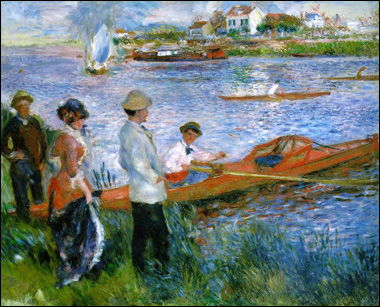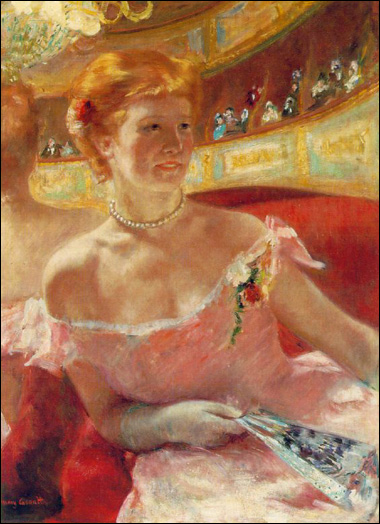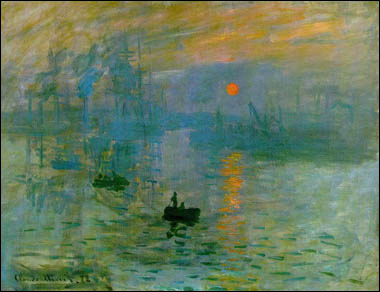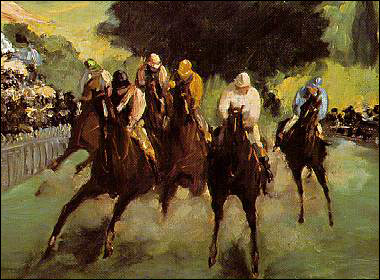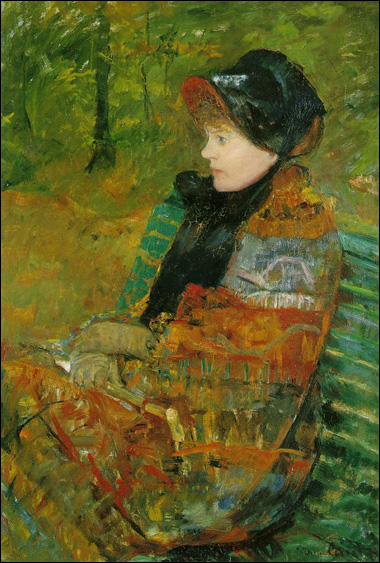The term Impressionism (or Impressionist) is a rather popular word in art circles—sometimes it seems that once a painting is labeled as having an Impressionist style, it has an extra air of appeal about it that it didn’t before.
But even though the word itself may have become a catch-phrase, it does have a specific meaning; so for those of you who aren’t completely sure what Impressionism is all about, read on.
Impressionism began in Paris in the mid-1800s as a sort of counter- movement to traditional painting techniques.
Most artists of that time period painted from models or still life reference inside studios, with every item perfectly arranged and lighted for the best effect.
But the artists who would become known as the Impressionists (including Claude Monet, Mary Cassatt, Pierre-Auguste Renoir, and Camille Pissarro) looked at art a little differently—they wanted to make art as truly realistic as possible, with brighter colors and more natural settings.
Another leading Impressionist was Edouard Manet. After one of his paintings was rejected from the Salon de Paris in 1863 (which was the premiere art show in Paris) he came in contact with several other French Impressionists at the Salon de Refusés (where all the rejected artwork was put on display that year.)
Once united, Monet, Manet, and the other Impressionists found similarities in their approach to art. They all began painting almost exclusively outdoors, which led directly to the distinctive characteristics of Impressionism that we’re so used to seeing.
(And also gave us the term plein air that we still use today.)
Because they painted outside, the Impressionists had less time to mix color and were forced to paint more quickly to keep up with the ever-changing daylight. As a result, their works generally seemed “unpolished” or messy compared to other artists, and were never really accepted by the art critics.
In fact, like the Fauves later on, the Impressionist’s name came from an art critic making fun of one of their paintings: a work by Monet which was entitled Impression: sunrise.
The critic took that word “impression” and used it to downplay the importance of their paintings, as though they hadn’t made a proper study of their subject, and weren’t serious artists.
But the Impressionists knew what they wanted to achieve—they were trying to replicate real life in a more honest way. They knew that the human eye isn’t able to capture an entire scene in perfect detail, so they allowed their paintings to break down at the edges, or wherever there was movement, in order to mimic that.
The Impressionists also understood that light and shadow are seen in glances and moments, and are ever changing. They began to worry less about smooth transitions of color and more about making the color and contrast stand out, to catch the eye like it would in real life.
For artists, if you want to paint in an Impressionist style it’s easy enough. Try using brighter colors and mixing less on your palette. Also, make shorter strokes with your brush, and set a timer to force yourself to paint quicker.
And I suppose, when talking about a painting that looks loosely painted up close, or one with lots of bright colors and short brush strokes; or even a quaint little plein air piece—you might as well go ahead and say it.
“It’s rather Impressionist, isn’t it.”
This post may contain affiliate links.
